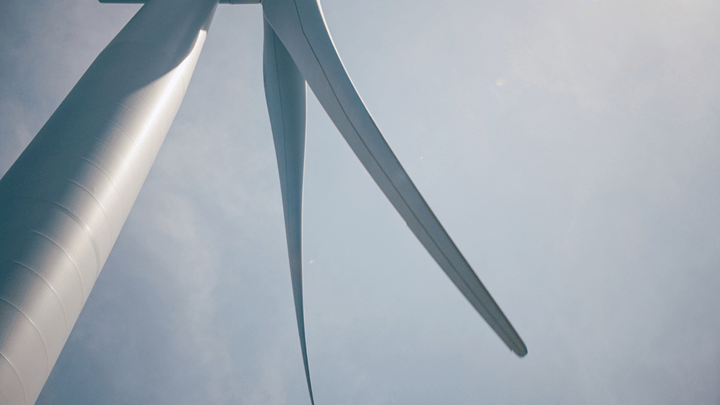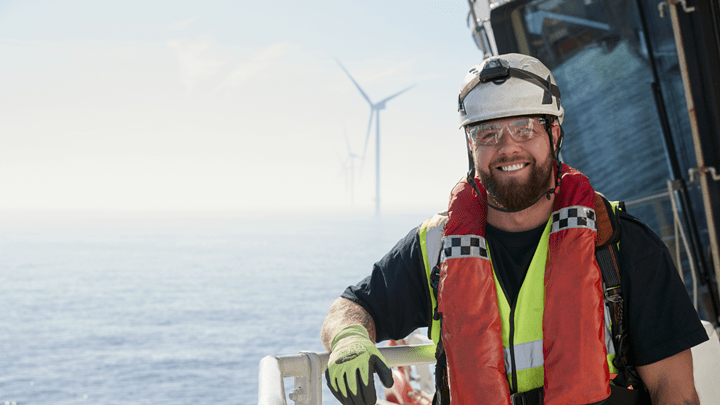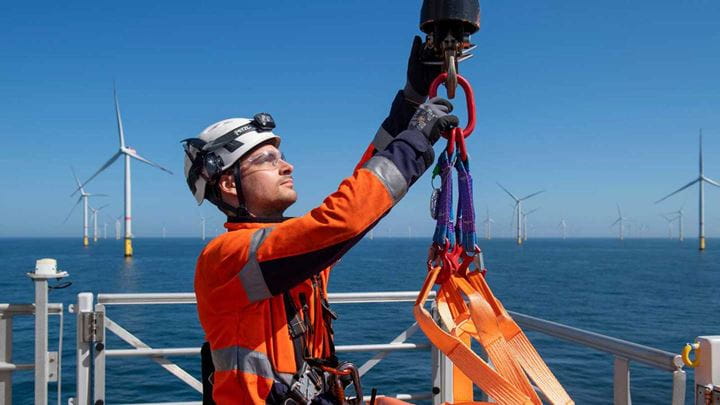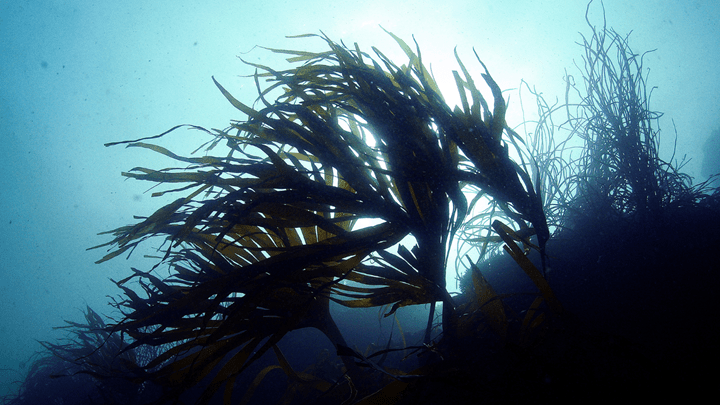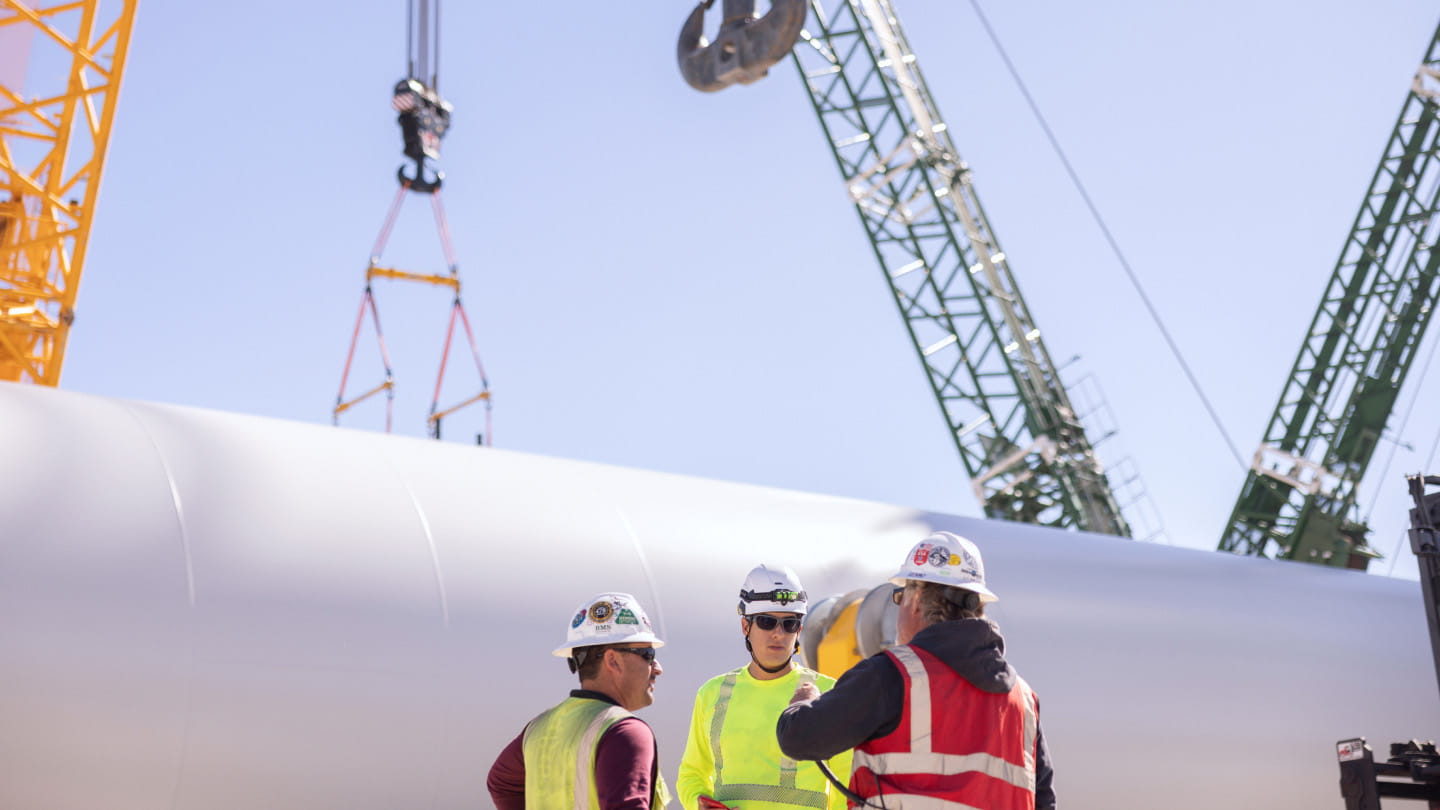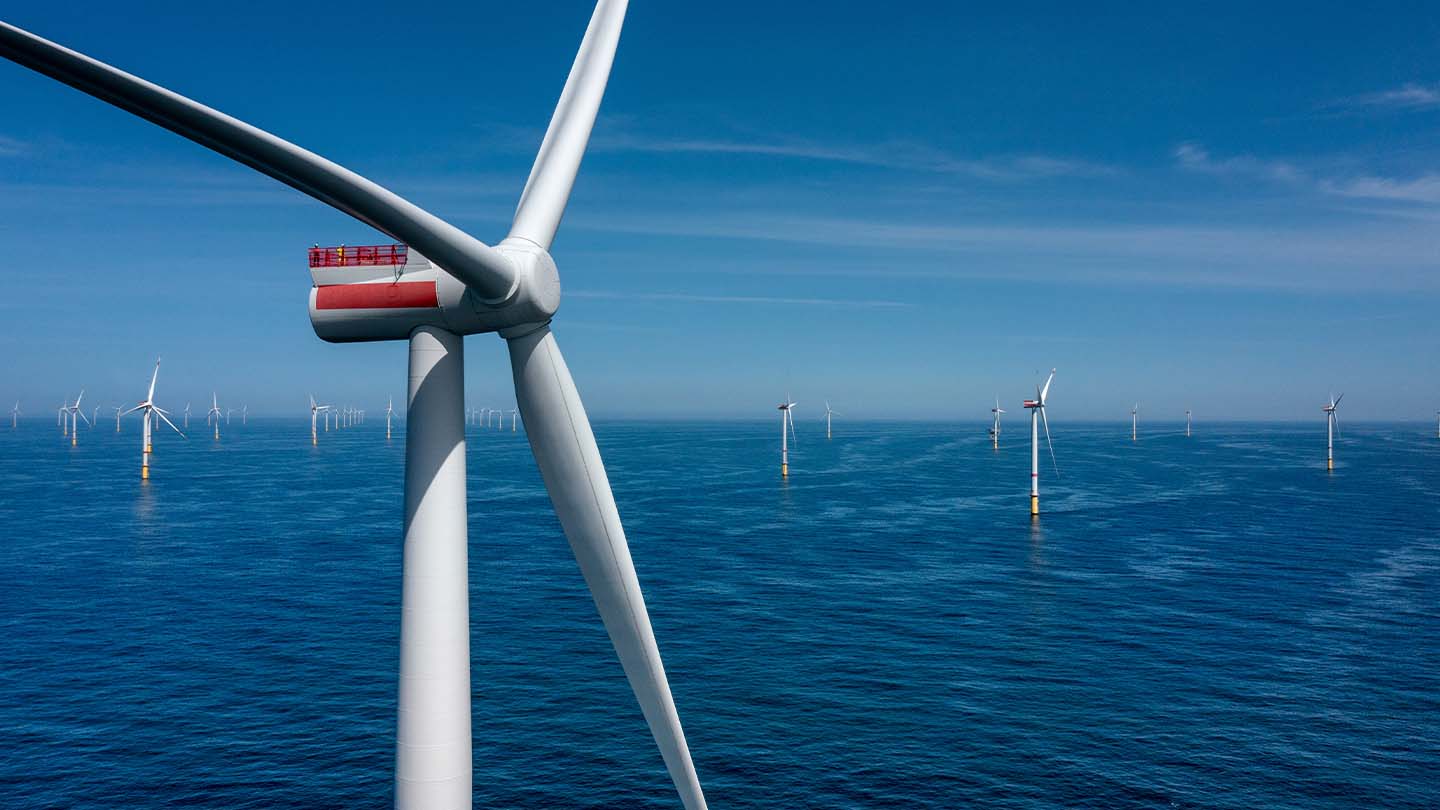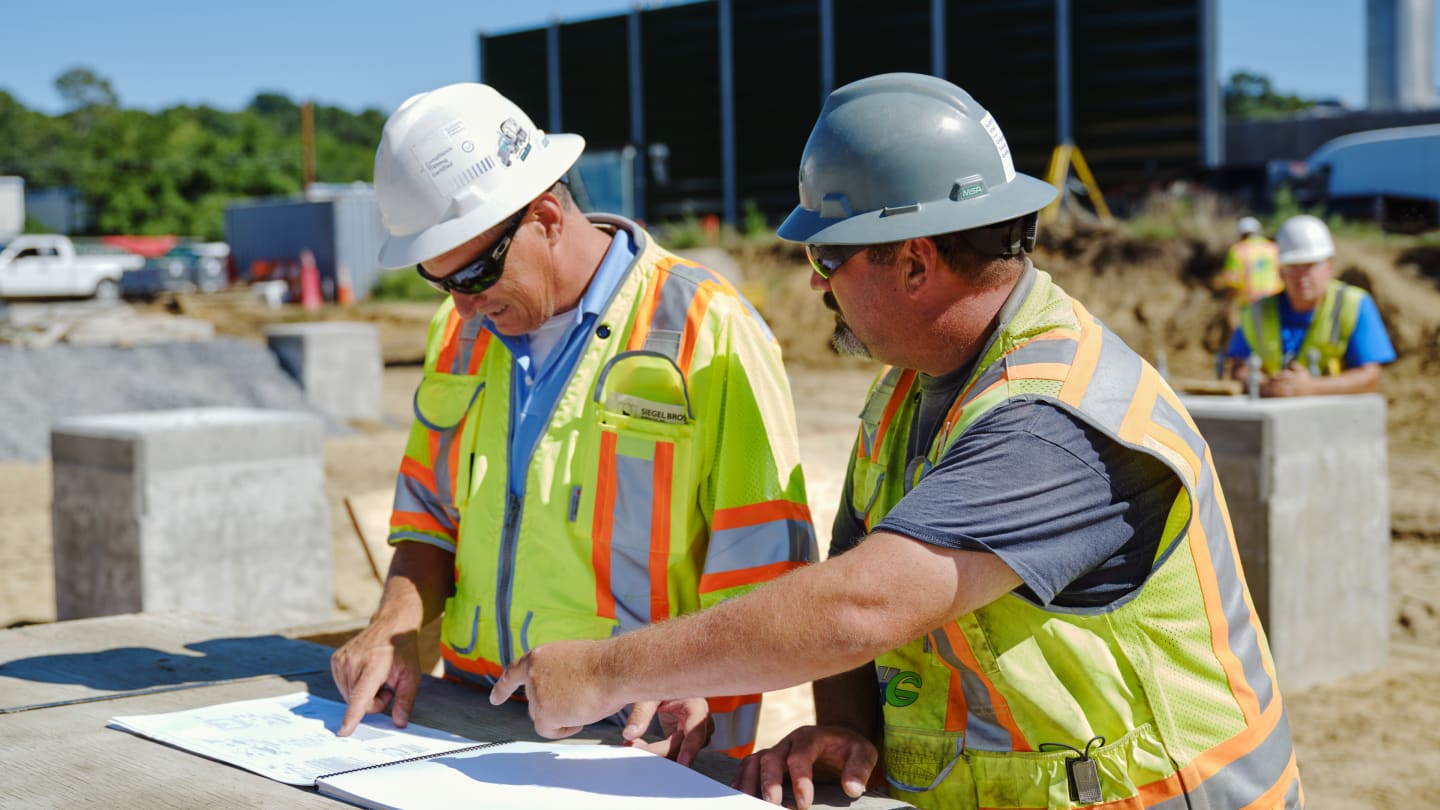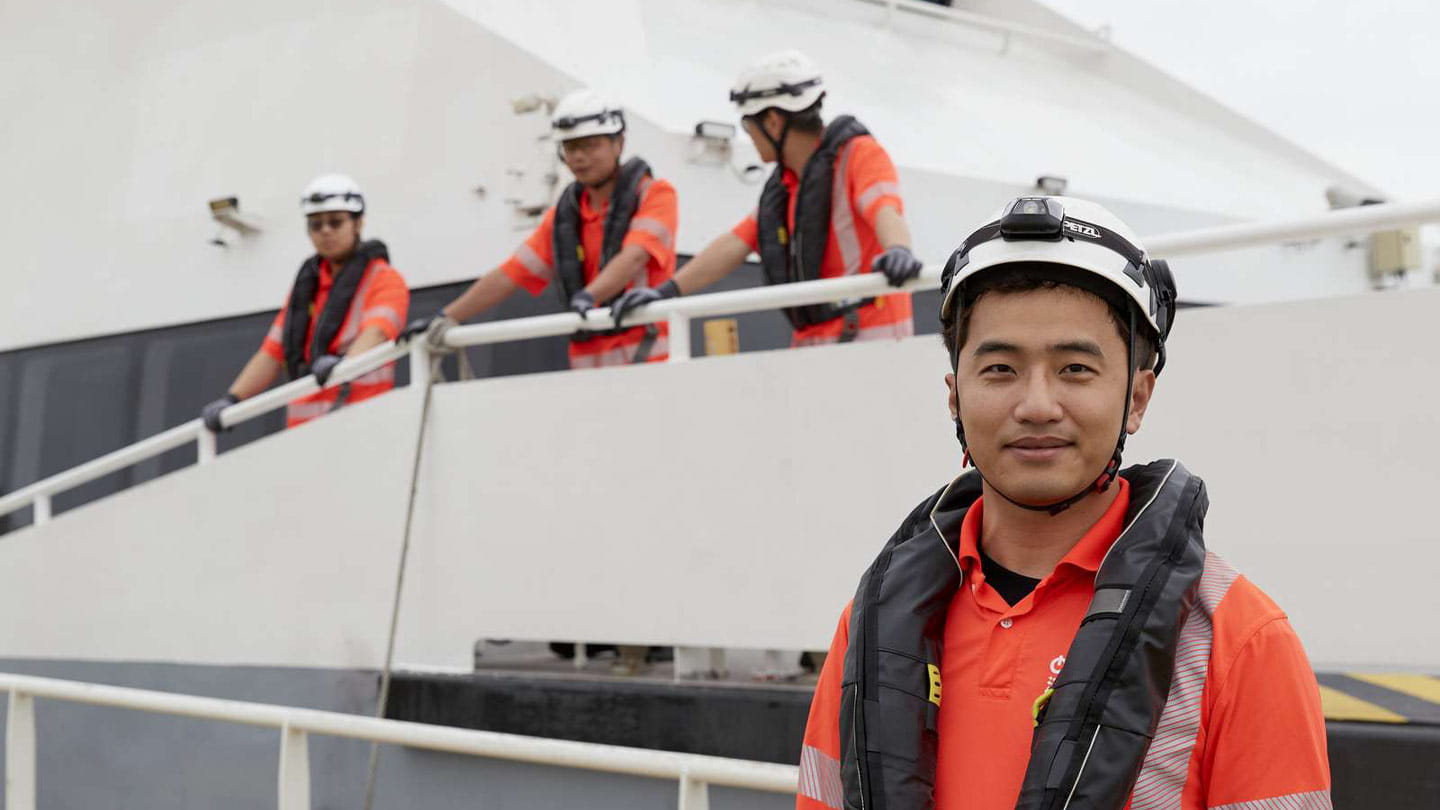Offshore wind: Already delivering for the UK
Offshore wind provides the UK with homegrown energy at gigawatt scale, and with it, the possibility of independence from imported fossil fuels, a greater degree of stability, thousands of jobs across the local and national economy, benefits for biodiversity – and of course, a massive reduction in greenhouse gas emissions.
Today, offshore wind is the backbone of the UK’s clean energy system. In 2024, it generated 17 % of the power used across the nation. Thanks to its scale and efficiency, offshore wind can help meet the growing need for electricity. Demand is expected to double between 2025 and 2050, thanks to the continuing electrification of industry and everyday life.
The task of generating energy is simply too important to rely on imported fuels. Offshore wind is already a central part of the alternative.
